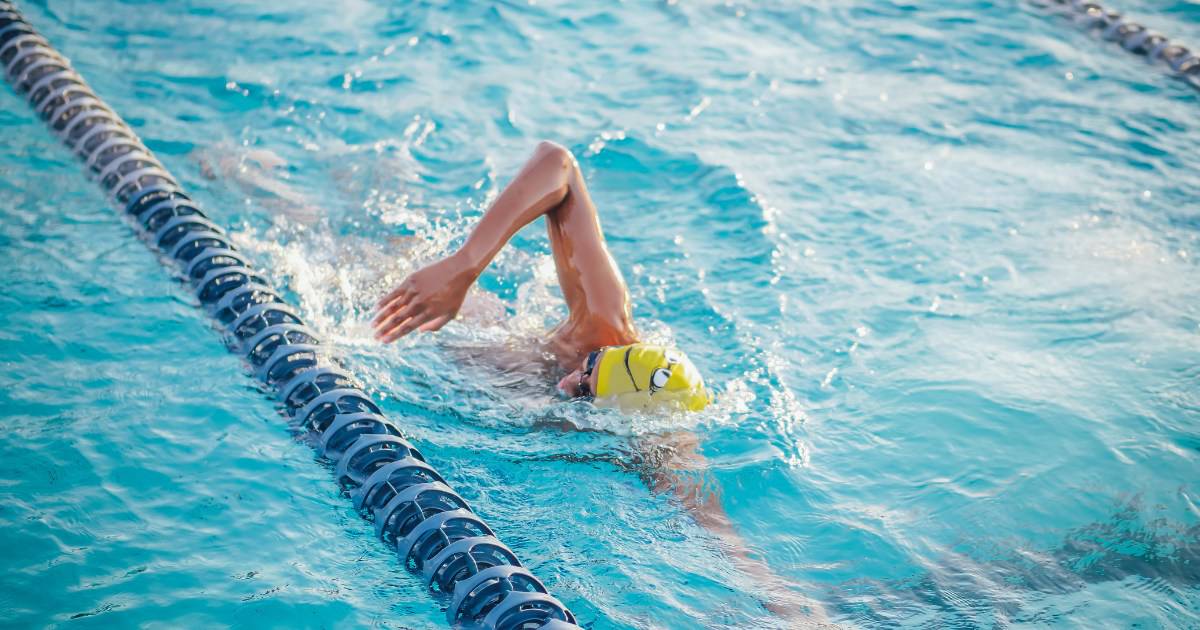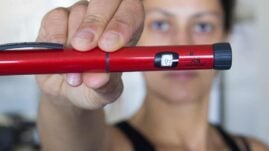Swimming with an insulin pump requires careful preparation to maintain blood sugar control and protect your device.
This guide covers practical tips to ensure a safe and enjoyable experience in the water.

Can you swim with an insulin pump?
This will depend on what kind of insulin pump you’re using.
However, It’s generally recommended that you avoid swimming with your insulin pumps attached unless you use a waterproof insulin pump cover.
While most insulin pumps will function fine if they occasionally come into contact with water, the water resistance will vary depending on your pump type.
The following popular insulin pumps offer different levels of resistance to water:
Omnipod
The Omnipod Eros, DASH, and Omnipod 5 are all confirmed waterproof.
This is the best type of insulin pump if you are in water often because you do not need to suspend any insulin while swimming or showering.
You can keep all regular insulin basal rates and even bolus while in the water.
The pod on your body is completely waterproof and can maintain optimal functionality when going as deep as 25 feet (7.6 meters) underwater for up to an hour.
The main thing to be aware of when swimming with an Omnipod is that water can make adhesive less effective, so the longer you’re in the water, the more likely your pod is to peel off (continue reading for tips on how to prevent this).
Tandem T-slim X2
Tandem T-slim X2 pumps are “watertight” but not “waterproof.” They can function at a depth of three feet for up to 30 minutes, but they are not designed for swimming.
Tandem recommends using waterproof pump cases to protect its pumps if they’re often near water to avoid water damage.
Medtronic Minimed
The Medtronic MiniMedTM 780G system is an IPX8 device, which means it’s waterproof up to a depth of 12 feet for 24 hours.
However, the sensor and transmitter are only water resistant to about 8 feet for a half hour.
This means the entire system (pump, tubing, sensor, etc.) is classified as splashproof—not waterproof. Swimming with your Medtronic pump is not recommended.
How to make insulin pumps waterproof
One of the simplest ways to waterproof an insulin pump is by utilizing protective cases.
Various companies offer waterproof pouches specifically designed for insulin pumps. These pouches are made from durable, waterproof materials that prevent water from reaching the device while allowing easy access and visibility.
When selecting a case, ensure it fits your specific pump model and check for features like secure closures and transparent windows.
What do I do if my pump is not waterproof?
Always refer to the insulin pump manufacturer’s instructions to determine the degree to which the pump is watertight or waterproof.
Waterproof pumps can be left in place while swimming.
Having an insulin pump that’s not waterproof doesn’t mean you can never go swimming, and it also doesn’t mean that you need to remove the infusion set and cannula to swim.
To make swimming easier, detach your insulin pump and tubing from your infusion set and suspend insulin. Once you’re out of the water, you can reattach them.
Be careful not to be detached from your insulin pump for too long.
Most people recommend detaching for an hour at most and then reattaching for a bolus of insulin to prevent high blood sugar and the possibility of diabetic ketoacidosis (DKA).
Tips for disconnecting your insulin pump to swim
The following strategies can help you detach your pump tubing safely:
- Suspend all insulin before disconnecting so your pump isn’t wasting medication.
- Check your blood sugar before you disconnect the pump, and bolus if your blood sugar is high, knowing that you’ll be without a basal rate for some time.
- Store your insulin pump in a waterproof case or bag nearby.
- Monitor your blood sugar throughout your activity, and if your blood sugar starts to go high, either reconnect for a bolus or take a manual injection of insulin.
- Try and limit insulin suspension to 60 minutes, unless you’re giving yourself insulin boluses along the way.
- Once you’ve reconnected your pump, do not forget to restart your basal insulin.
- Stay hydrated. Dehydration can make high blood sugars worse, leading to insulin resistance and DKA more quickly.
- Always carry low blood sugar snacks, especially when exercising in the heat.
How long should I leave my pump disconnected for swimming?
This will all depend on your blood sugar, insulin sensitivity, insulin resistance, if you’re eating, and how much activity you’re doing.
Most people recommend only disconnecting insulin pumps for up to 60 minutes before reconnecting to take a bolus dose of insulin.
Always monitor your blood sugar before, during, and after water activities.
You are more susceptible to DKA and high blood sugar when you’re not receiving basal insulin from your insulin pump.





T1d mom
Would like to have seen a list of waterproof pump cases. Have only ever found one company that makes them and the Cl in water destroys the plastic. T1 is a swim coach so always in water. It is challenging to find protective case
Linda
Can I do aquafit with my Omnipod
Christel Oerum, MS
Omnipod Pod has an IP28 waterproof rating allowing it to function up to 25 feet (7.6 meters) underwater for 60 minutes
LevelUp Online Education
Thank you for this incredibly helpful guide! It’s reassuring to see practical tips for staying active while managing diabetes, especially for swimmers. Your breakdown of waterproofing options and personal experiences really helps make this feel doable and less intimidating. Great resource for anyone using a pump!